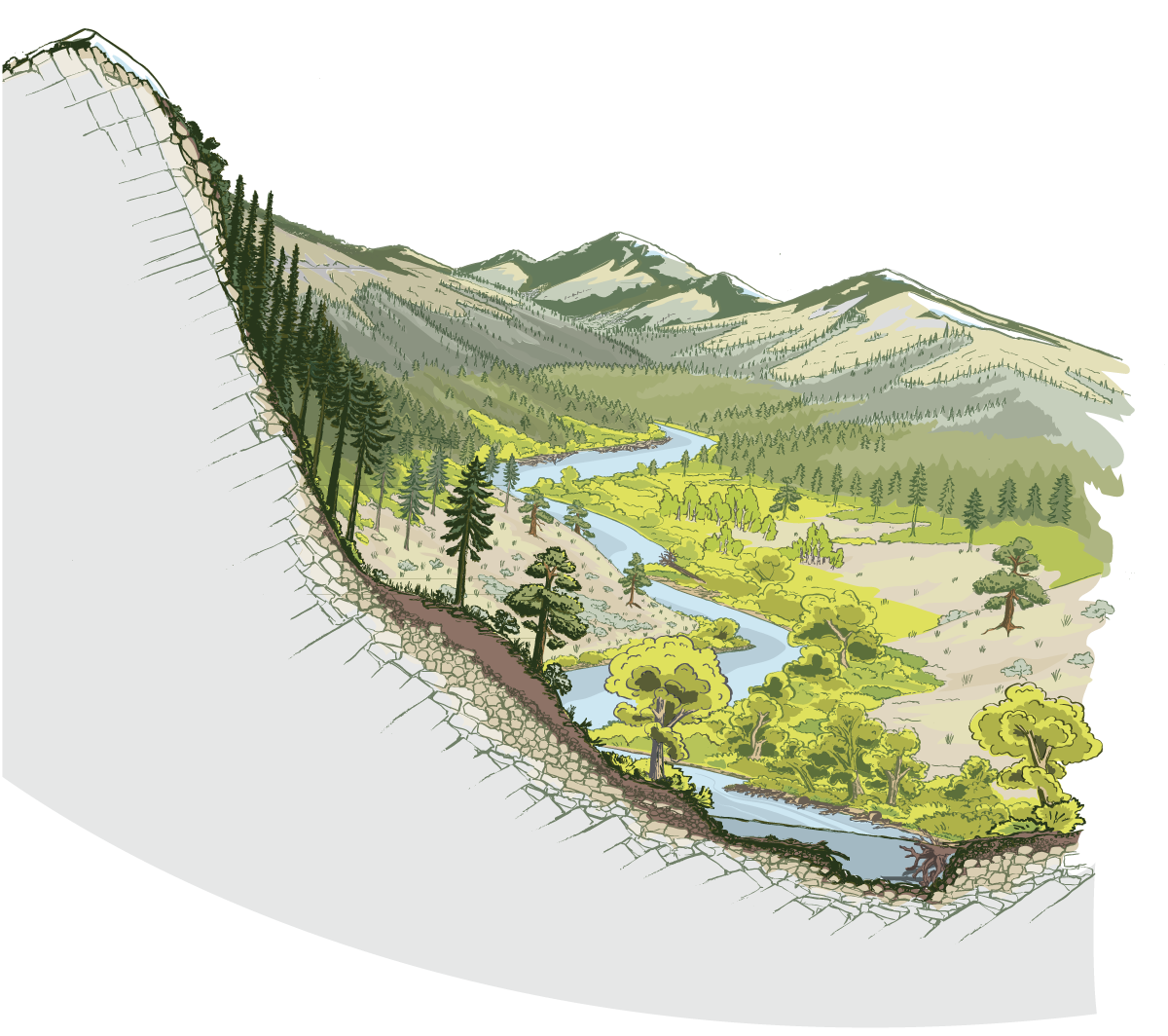Snow2flow
Understand Implications of Forest
Management On Stream Flows
In The Upper Columbia Basin
Launch
Understand how Forest Restoration Activities
Retain
Snowpack
Influence
Water Supply
Alter
Timing
Salmon Recovery Support
This free, online decision support tool helps forest and stream restoration practitioners support salmon recovery across North Central Washington. The easy-to-use website informs salmon recovery by assessing the effects of forest restoration activity on snowpack retention and subsequent water supply and timing.

About the App
Water availability, especially during the late summer, affects salmon populations in the Upper Columbia. One of several approaches to increasing the amount of water available for instream flow in the late summer is by increasing the capture and duration of storage of mountain snowpack. This tool, developed by Ecotrust, builds on Pacific Northwest National Laboratory’s Distributed Hydrology Soil Vegetation model (DHSVM) and forest research by Pacific Northwest Research Station to identify both how forest restoration activity affects downstream flows, and where to target upstream restoration activities to benefit specific in-stream locations.
The goal of Snow2Flow is to simulate the approximate change in streamflow with realistic forest treatments. These treatments were developed in collaboration with Okanogan-Wenatchee National Forest (OWNF) managers. While these four treatments do not exactly reflect every scenario OWNF managers will use, the goal was to match them as broadly as possible. Results are not meant to predict exact changes in streamflow, since actual changes will vary based on the weather of the post-treatment years. Furthermore, this tool is not designed to guide OWNF forest management, but rather explore how planned forest management may effect streamflow. Our hope is this model can be used to identify where forest management can potentially increase streamflow and improve salmon habitat.